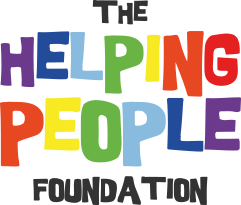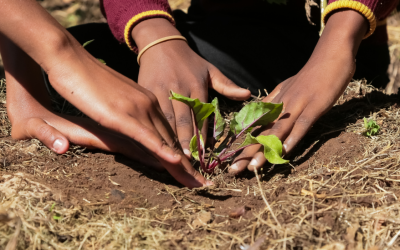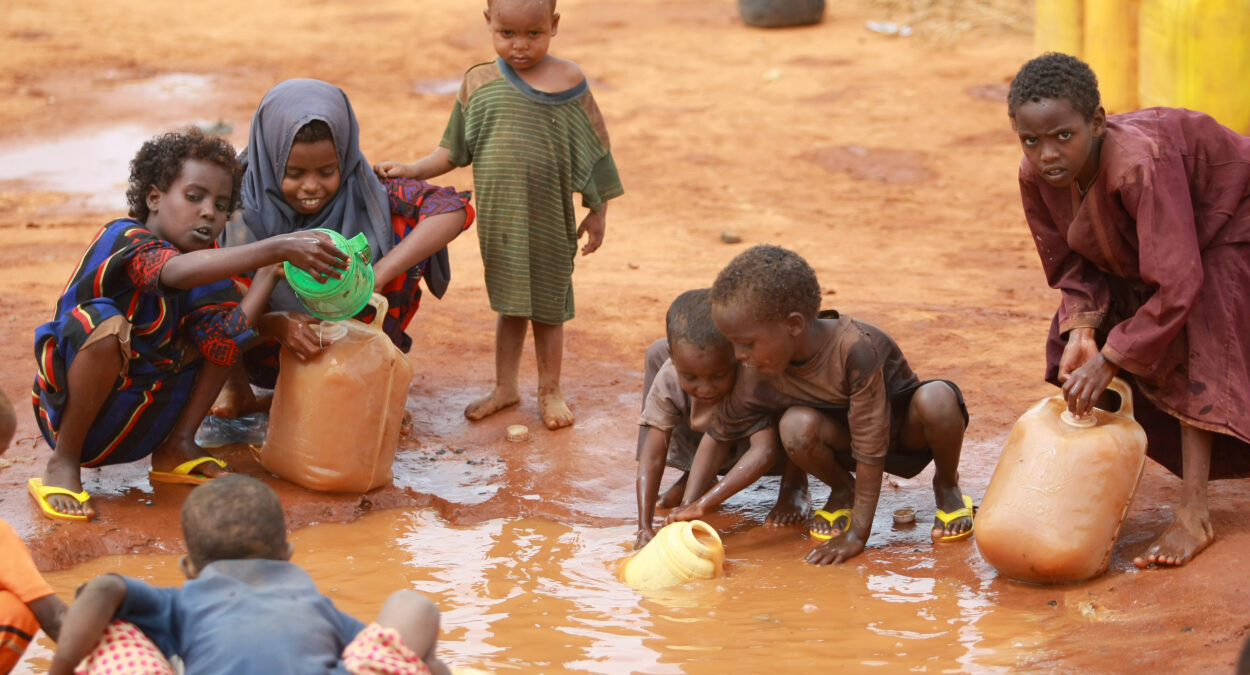CURRENT LIVING CONDITIONS IN SIERRA LEONE
SCHOOL
The constitution provides for nine years of compulsory education in Sierra Leone and the literacy rate is just under 48% of the adult population. Ideally, students attend primary school for six years, then junior secondary school for three years and senior secondary school for another three years.This is followed by tertiary education for another four years. Since 2018, education in the primary and secondary sectors has been free of charge. Parents, who nevertheless undermine their children's compulsory education, are even threatened with imprisonment. There are about 1600 pre-schools, 7000 primary schools, 1500 lower secondary schools and 581 upper secondary schools in the country.
MEDICINE
Access to minimal healthcare is really only available in the big cities and infant mortality was the very highest in the world until 2008.(Preventable) infectious diseases are always a major problem. Yellow and Lassa fever, meningitis, diarrhoea, hepatitis, typhoid, cholera, malaria are at the top of the list. AIDS is also very common, with estimates of more than 1.4% of the total population being HIV-positive in 2017. For some time now, a new disease has been making news in Africa, spreading mainly in Sierra Leone, Liberia and Guinea. The highly contagious Ebola virus, which is often fatal, was first isolated in 1976. Sierra Leone had suffered from the world's largest Ebola fever epidemic since 2014; but in November 2015, the country was declared Ebola-free by the World Health Organisation (WHO) after 42 days of no new infections.
Water
Sierra Leone, like other developing countries in Africa, cannot yet offer the majority of its population sufficient access to clean drinking water. This seems absurd, since the abundant rainfall, which lasts half the year in the rainy season, should provide sufficient reserves. However, the necessary infrastructure is lacking here too. Nearly half of the rural population lives only on surface water as nature delivers it, and still about a quarter of urban dwellers have no clean and safe drinking water supply.Water pipes are only available to a small, single-digit percentage. The fact that access to drinking water has been a human right in the UN resolutions since 2010 is of only marginal concern to the administration.
nutrition
Welthungerhilfe still classifies the situation in Sierra Leone as “very serious”. The situation was aggravated by the Ebola epidemics of 2014 to 2016, which again claimed many lives and promoted malnutrition. As a result, many people could no longer afford regular meals and the social inequalities in the population are equally serious. It will be a long time before all Sierra Leoneans gain regular and equitable access to the fruits of prosperity.

Geography
The African state of Sierra Leone lies south of the Sahel zone and north of the equator, bordering Guinea to the north as well as to the northwest and northeast. Towards the southeast, Sierra Leone borders Liberia and in the southwest of the country is the Atlantic coast. The country's borders have a combined length of 1495 kilometres and the coastline is about 402 kilometres.
In addition to a tranquil natural landscape, Sierra Leone also has a fascinating mountain range to admire. The so-called Lion Mountains are located in the west on the Freetown Peninsula and their highest hill is Picket Hill at 888 metres above sea level. There are up to 112 km of offshore sandbanks in many coastal areas and, behind the wetland, a fertile forest area adjoins, which is of great agricultural benefit.
Apart from small hills, which are mainly seen in the west, the land rises in an easterly direction to the Guinea Highlands. This plateau has elevations up to 1,948 metres and Bintumani is the largest mountain here. The average temperature in the northern part of the country settles at around 25.5 degrees Celsius; but near the coast, it is between 23 and 32 degrees Celsius and, in the south, even between 20 and 37 degrees Celsius.

History
Archaeological excavations in Sierra Leone prove that human settlements took place on the small African peninsula around the capital very early in history. Thus, it was the Bullom and the Lokos, who went down in history as the first inhabitants of what is now Sierra Leone.
With the invasion of Portuguese seafarers, who at this time also subdued parts of the American continent, an enormous demand for labour emerged around the year 1440. Indigenous people from West Africa were enslaved and kept in bondage, often with the active participation of tribes of the local population, who profited from the trade. Around 1562, the slave trade began with the first slave ship of the English trader John Hawkins and thus took its dark course. Not all slaves bowed to their humiliating fate and there were slave revolts and countless attempts to free them.
HISTORY FROM THE 18TH CENTURY ONWARDS
By the end of the 18th century, approximately 7,000 slaves were shipped to English settlements and very soon a movement arose to abolish slavery. The idea of resettling the former serfs on the African continent took off. Freetown, the capital of present-day Sierra Leone, served as the perfect settlement site for the former slaves, who were now free again. True to its name!
By 1807, Great Britain had banned the slave trade completely and former slaves were repatriated to their colony, where most were even originally from. There was to be no more slave trade from then on, but regular patrols by British warships nipped any attempt at new slavery emanating from Sierra Leone in the bud. The population of the crown colony of Sierra Leone then skyrocketed.
Many of the returnees found a new home in Freetown and together they created a creolised population. Representatives of the Creole population were found there as early as 1808. Freetown got its own mayor in 1893.
From 1951 onwards, British efforts to make the country independent soon deepened. This happened in 1961 on 27th April under the leadership of Milton Margai, also the first Prime Minister of the new country. Since that time, presidential and parliamentary elections have been held regularly. Unfortunately, the inner peace did not last very long.

Economics
Seventy percent of Sierra Leone's population live in poverty today, with an average of just one US dollar per capita available for subsistence. On the list of the United Nations Development Programme, the country occupies the inglorious last place. In addition, there is a low employment rate of less than one third and a high foreign debt. Primary production is considered a fluctuating livelihood, with a share of over sixty percent. Agriculture does not even use ten percent of the available arable land, and unsustainable methods such as slash-and-burn and shifting cultivation dominate.
Rice, millet and manioc are grown only for subsistence. Coffee, palm oil and cocoa are the main export products. Fisheries contribute more than ten percent to the gross domestic product. Especially herring and tuna can be caught in the (still) fish-rich coastal waters. Despite the prevailing poverty, the country is rich in mineral resources: Bauxite, lignite, chromium, diamonds, iron ore, gold, graphite, columbite, manganese, molybdenum, platinum, rutile (titanium oxide) and rhodium. However, industrial production is stagnating due to the civil war and rebel attacks from neighbouring countries. Technology and infrastructure can only be guaranteed with the help of foreign mining companies.
WHAT THREATENS THE PEOPLE OF SIERRA LEONE?
Domestic agriculture is not in a position to effectively combat food shortages. Sierra Leone will therefore continue to depend on aid deliveries and donations from abroad for years to come.
Shaky successes of the past could be threatened at any time by an invisible enemy. For example, a new Ebola epidemic could very quickly manoeuvre the country into a humanitarian crisis again, but the COVID 19 situation must also still be considered critical. The country's poorly developed health system would also have little to counteract a renewed flare-up of disaster.
DIFFERENCES IN THE REGIONS OF THE COUNTRY
Sierra Leone is a multi-ethnic state; officially, there are 15 ethnic groups. Characteristic of this is also the diversity of languages spoken, from which the presence of the respective ethnic groups in the country can also be deduced: the largest are Mende and Temne, followed by Limba, Kono, Koranko, Fullah with shares of less than ten percent. Less than three percent are occupied by Susu, Kissi, Loko, Madingo, Sherbro, Krio, Yalunka, Krim, Vai. Only occasionally Maninkakan (Malinke), N'Ko, Bassa, Bullom So (Bullom-Sherbro), Gola (Gola), Klao and Bom are still spoken.
Among the most recent immigrant ethnic groups are the economically influential Lebanese. The Kru and Bassa migrated from Liberia. The consequences of slavery continue to have an impact to this day. The Maroons are the descendants of freed slaves. The largest religions in the country are Islam and Christianity. The Muslims are mostly Sunnis; people of the Christian faith are followers of the Evangelical Methodist churches. Religious conflicts are quite rare in the country.
Sources:
goruma. Sierra Leone: geography, map; URL: https://www.goruma.de/laender/afrika/sierra-leone/landkarte-geografie (last accessed 17.02.2022)
goruma. Sierra Leone: Population and cities; URL: https://www.goruma.de/laender/afrika/sierra-leone/bevoelkerung-staedte (last accessed 17.02.2022)
statista. Sierra Leone: Total Population from 1980 to 2017 and Projections to 2026(in million inhabitants); URL: https://de.statista.com/statistik/daten/studie/343084/umfrage/gesamtbevoelkerung-von-sierra-leone/ (as at: 21.01.2022)




